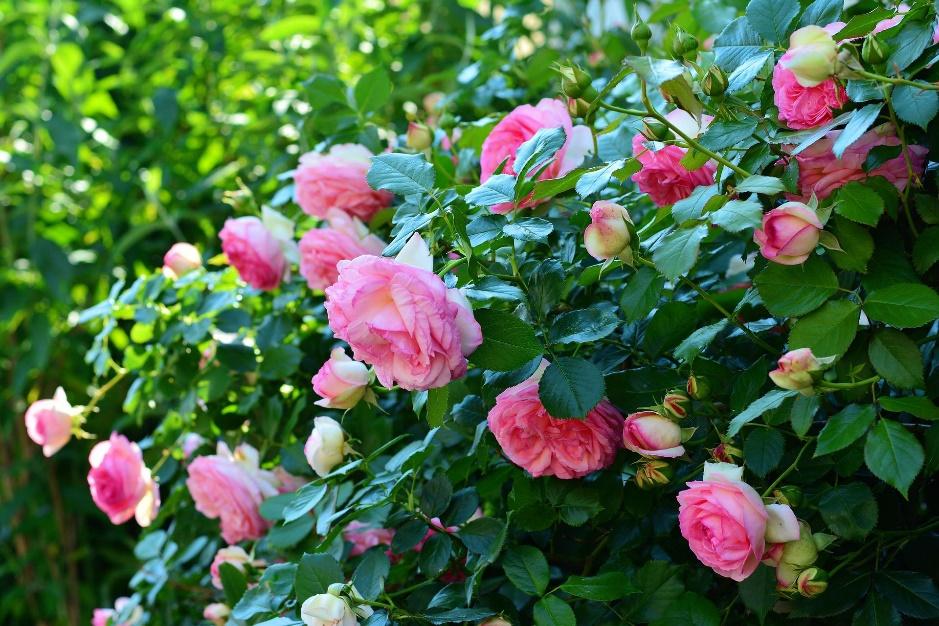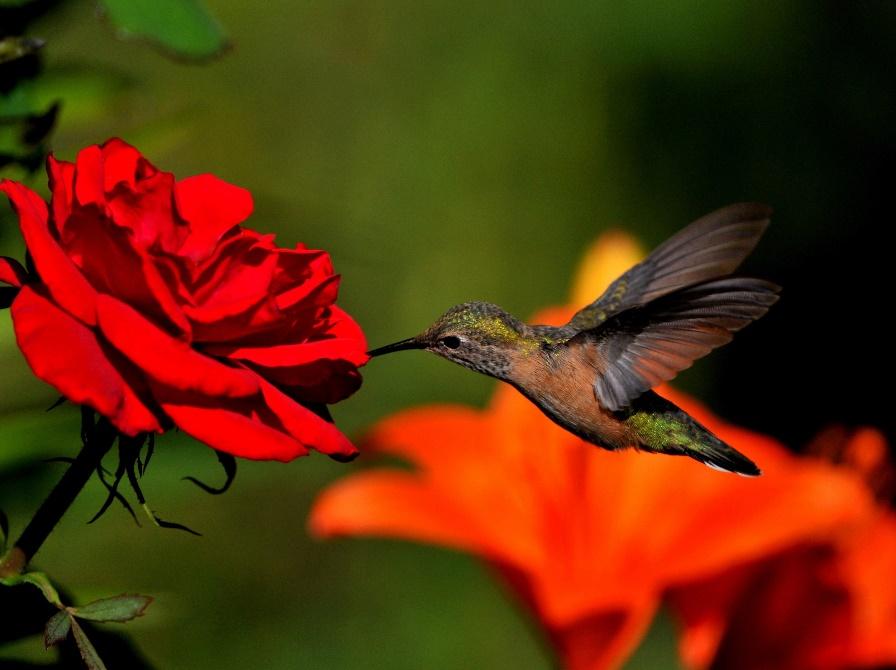
Pollinators are any living or nonliving thing that helps with the pollination process, the transportation of pollen grains from male to female flower parts. This article will walk you through what pollinators are attracted to roses, and why they are attracted to roses.
Background information: What Is Pollination?
Table of Contents
Bees

Bees are the primary pollinators of roses. Bees are drawn to the aroma of roses, as well as the nectar in the flower. They fly from rose to rose, drinking nectar and transporting pollen along the way. Most bees prefer roses with fewer and open petals, such as beach roses and wild roses. These roses have a more appealing fragrance to bees, and provide an easier landing spot, which helps bees save energy.
Aside from the aroma and nectar, bees are also drawn to the color of roses. However, because bees are colorblind to the color red, they prefer blue, purple, white, and especially yellow roses.

Source: Bee Culture
Another factor for why bees are attracted to roses is due to the flowers’ structure. Roses often grow in shrub structures, with many flowers blooming closely together. This makes it easier for bees to transfer quickly from one flower to another, saving them time and energy.
Read More: What Plants Do Bees Pollinate?
Butterflies

Like bees, butterflies are attracted to roses’ fragrances as well as the nectar. In fact, butterflies depend on nectar as a primary source of food in order to build up their energy for flying.
In general, butterflies are drawn to brightly colored roses because their vision is far sharper than their sense of smell. Unlike bees, butterflies can recognize red colors as well.
Read more about butterfly pollination: Are Monarchs Pollinators?
Beetles
Beetles are also rose pollinators, but unlike butterflies and bees, they can sometimes damage the flowers. Not only do beetles feed on nectar, but they also feed on petals as they make their way inside the flower. Despite their destructive feeding behavior, beetles benefit roses, as they pollinate the flowers, especially when bees and butterflies are not present.

Source: UCANR/Jack Kelly Clark
Usually, beetles prefer open flowers with the pollen exposed. This allows them access to the nectar without chewing through the flower. Beetles are also typically drawn to strongly-fragranced, light-colored roses, which they prefer to consume. Hoplia beetles, for example, are typically attracted to white, yellow, and pink roses, where they feed on the petals to get to the nectar and pollen before transferring to another flower, contributing to pollination. As a result of this type of pollination, many flowers, including some roses, developed features that increase their protection against being eaten. For example, some beetle-pollinated flowers may have thicker petals.
Hummingbirds

Hummingbirds are among the most numerous bird pollinators on the planet. They are drawn to flowers with bright colors such as yellow, orange, purple, blue, and especially red. While hummingbirds may be attracted to the bright colors of roses, the amount of nectar in roses is insufficient for hummingbirds, so they leave as soon as they try to drink from a rose bloom.
Deer

Source: World Deer Org.
Deer pollination is driven by their diet and grazing behavior. As deer graze, usually in the morning or early evening, they move from plant to plant, transferring pollen along with them. Deer are attracted to shrubs and flowering plants, particularly roses. Deer feed on rose blooms and buds, as well as the thorny branches.. Although the feeding behavior and diet of deer may be destructive to roses, deer still contribute significantly to pollination, and play an important “substitute role” when major pollinators like bees and butterflies are not present.
Read more: Are Deer Pollinators?
Squirrels

Squirrels are also considered pollinators, and are a primary example of a vertebrate pollinator (a pollinating species with a spinal bone). Like the pollinators discussed above, squirrels are attracted to the sweet fragrance and vibrant color of roses. Squirrels eat rosebuds, blooms, leaves, and even seeds. Squirrels use their exceptional climbing abilities to reach roses on elevated branches and help with pollination by spreading rose pollen that sticks to their nose and fur as they eat.
